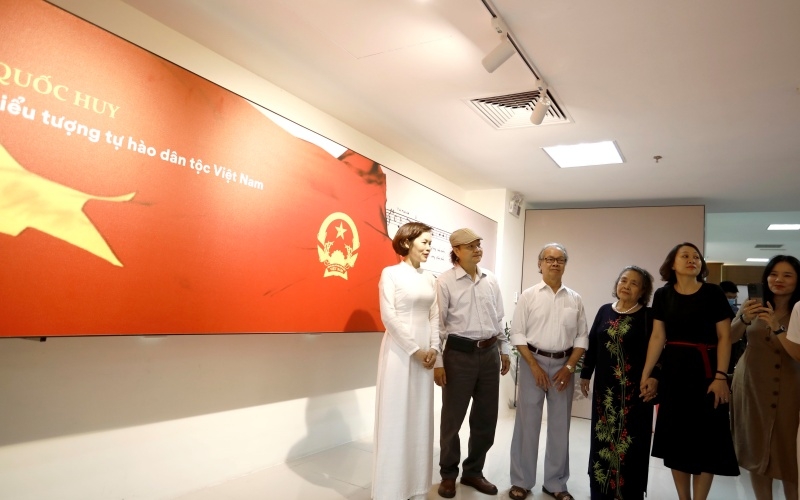On display are nearly 200 documents, artefacts and photos that were selected from the National Archives Centre II and provided by families of late painter Bui Trang Chuoc and late musician Van Cao, Nguyen Huu Tien Memorial House in Ha Nam and many other agencies and individuals.
The exhibits specifically introduced the most important symbols of Vietnam, including the national flag, anthem and emblem as well as special stories about the birth of these symbols.
Vietnam’s national flag is a red flag with a yellow star. This is a sacred symbol of the country’s spirit, the people’s heard, the solidarity of the ethnic groups, the revolutionary enthusiasm and heroic sacrifice of Vietnamese people during the fight for national independence and reunification.
Visitors reading the introduction of the national anthem
The national anthem was composed by late musician Van Cao in the winter in 1944, encouraging the spirit, the patriotism and fighting will of Vietnamese soldiers and people. On September 2, 1945, the song was played solemnly during the Independence Declaration Ceremony at Ba Dinh Square in Hanoi.
The national emblem expresses the country’s sovereignty and national identity, becoming a symbol for an independent country. The birth of Vietnamese national emblem is associated with the role and talents of late painter Bui Trang Chuoc. From 1953-1955, he sketched 112 prospective national emblems and then submitted the 15 most outstanding versions to President Ho Chi Minh and the National Assembly. In January 1956, the official emblem was approved.
Following the national reunification, the sixth National Assembly decided to choose the official national flag, anthem and emblem of the Socialist Republic of Vietnam of today on July 2, 1976.
The exhibition contributes to honouring the nation’s symbols as well as promoting the values of typical and valuable archives.
The exhibition will last until the end of 2020.
Several submissions to the competion of national emblems
On the occasion, the National Political Publishing House–Truth, in collaboration with the Archives Department of the Party Central Office and the State Archives Department, published the book “August Revolution – building and consolidating the government from 1945-1946”.
The contents of the documents introduced in the book bring about a comparative perspective of historical events, contributing to explaining the success of the revolution.
The book “August Revolution – building and consoldiating the government during 1945-1946”


.jpg)
.jpg)



